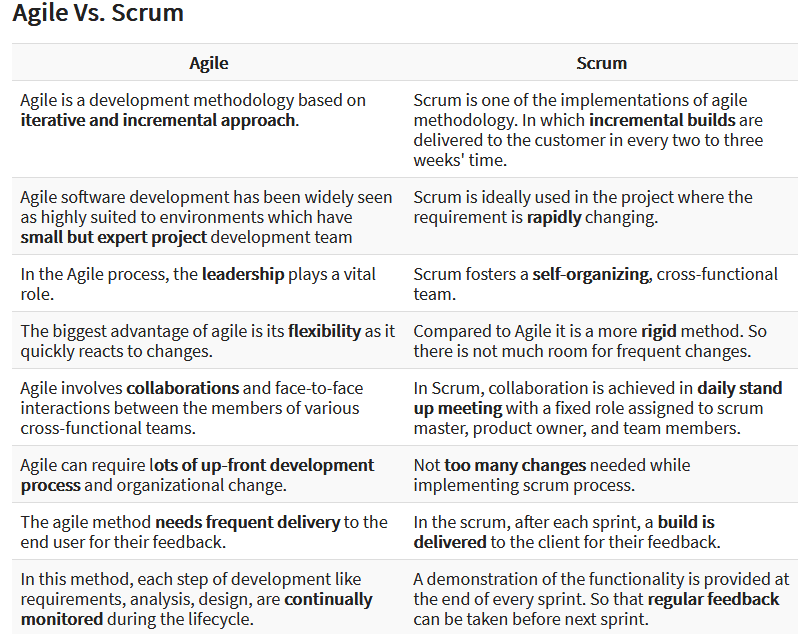6 Mistakes Scrum Masters Should Avoid, and Their Remedies
Agile methodology has become one of the most popular and dynamic project management styles among software development companies.
It is important to note that Agile can be applied to many types of projects and teams by not restricting its usage to only engineers or software development projects. The Agile framework is widely accessible across the globe in all different types of organizations due to its effective and fast results.
We will be looking at some of the best practices for the Agile team member known as the “scrum master,” who can help any organization drive toward success. Here are a few of the pitfalls, with possible remedies, to help illustrate the role of a scrum master. But let’s start with a few basic terms.
What Is a Scrum Master?
The software delivery process runs through an Agile methodology called “scrum.” Scrum is an iterative software development model that allows us to handle complexity in software development. It is widely recognized among engineering teams in different sectors, from manufacturing to operations and education and in all kinds of different businesses.
In scrum methodology, there are sprints, which are fixed terms of almost two weeks in length. In each sprint, a team works on the software development process, and at the end of each sprint, the whole team then plans the next step. Here’s an illustration:

Agile and scrum both follow a similar process of software development, with one major difference: Agile is built on a set of principles, whereas scrum follows specific guidelines and rules. Both are meant to implement Agile philosophy.
Here are the quick differences between Agile and scrum:

Scrum is the latest hip buzzword in project management and is now embraced by many companies and organizations around the world. Some project leaders still fail to realize the potential of scrum, which can cause the company or team to face a huge loss. This can be easily avoided by utilizing the scrum master techniques.
Being a scrum master is a tough job, and some developers don’t understand what it is. Generally, scrum masters are misrecognized as the project managers or the project head. But this is not the reality. The scrum master is the person on the team who takes care of the team members’ suggestions and, at the same time, maintains the project work effectively.
Mistake No. 1: Behaving Like a Project Manager
Companies that adopt Agile methodology follow daily scrums. This means the projects need to follow up daily for effective and faster deployment. Here, the scrum master often acts as the project manager or the project head by keeping an eagle eye on the other team members.
The Agile framework should not inspire a command and control mentality, where a leader assigns tasks and dictates efforts. Scrum teams are considered to be self-organizing, as the scrum master is the servant leader, and teams learn to perform better by delivering greater value more efficiently.
How to handle it: Instead of dominating daily meetings with the team members, the scrum master should also ask for the members’ opinions and work accordingly. Rather than giving the everyday tasks, the scrum master should ideally make team members ask themselves “What should be finished next?”
Mistake No. 2: Making Decisions All Alone
This can be a serious issue, as coming up with a unilateral solution can have a misguided impact on all, and such situations can make team members furious and lose focus on the project. The scrum master needs to consider everyone’s opinions rather than just going with self-made decisions.
The scrum team needs to give input as well as the master so they can perform better together. Everyone’s suggestions and opinions should be kept in mind to make the best decision.
How to handle it: It is the sole responsibility of the master to ask for each and every team member’s individual opinion. The scrum master does not know everything, and the opinions given by all can sometimes result in a better solution than what was decided earlier. The team members’ opinions matter as much as the scrum master’s.
Mistake No. 3: Frequently Checking Up on Team Members
The scrum master often commits a sin by checking up on team members too frequently. Doing so degrades the scrum master’s image in the eyes of the members, which ultimately makes him a bad leader. One should definitely avoid this, as it can lead members to become angry and ruin relations with the scrum master.
Frequent follow-ups can cause a situation of distrust among the scrum team. No individual likes to be analyzed every minute while getting their work done.
How to handle it: The team members are not only the scrum master’s workers but also their partners. So, scrum masters should trust the team members the way anybody would their close partners. This will give them more space to work freely and represent themselves more prominently in their respective work. Allowing team members to be responsible for themselves leads to productivity, but at the same time, scrum masters should encourage them to have a chat, if required, in a timely manner about the project.
Mistake No. 4: Assuming Agile to Be Easy
It is evident that Agile methodology provides faster ways to identify errors and solve them as soon as possible. Transition to Agile takes time for any organization.

In the initial stages, there will always be fear of messing up. Adapting to Agile is definitely time-consuming, but once you figure it out, it becomes much more familiar, and products can be delivered faster.
How to handle it: Things will be more difficult in the beginning when the scrum master tries their hand at Agile methodology. With time, it will seem natural and improve communication, time management, and much more.
Mistake No. 5: Not Handling Changes Quickly
Implementing sprints can take a little more time, but it is estimated that no event should take more than 15 minutes. The daily scrum should not exceed 15 minutes in general, but often the team members will start to discuss their technical difficulties, which will cause it to exceed the allotted time.
Not quickly recognizing changes when they happen can lead to trouble, as this can stress the client and shake their confidence in the organization. Getting regular updates helps to improve the overall product development.
How to handle it: The way to have a time-bound sprint is to make the team members stand during the meeting for 15 minutes, which will eventually make them tired, and they will finish up the meeting faster. Also, scrum masters should get accustomed to the recurring changes, as it is essential to roll with the changes quickly to stay up to date with the project.
Mistake No. 6: Not Communicating Directly
Often, the scrum members might feel a bit anxious talking to the product owner. They think it better to communicate through email for answers. Such communication does not help to resolve a problem but often creates a new one because of the miscommunication.
The scrum master should not act as an intermediator; and hence the team members should be given authority to freely ask the product owner questions directly in order to resolve the doubts.
How to handle it: Email communication can seem to be a better alternative, but sometimes it can lead to miscommunication or conveyance of incomplete details. It is a better choice to have face-to-face communication with the product owner, which is more effective. This can also help boost the team members’ confidence when it comes to speaking with people. Direct communication helps to solve the query immediately and saves time.
Before You Go
We have seen some of the hurdles faced by the scrum master along with the most suitable remedies to work them out. These problems can be overcome by implementing scrum using skill, expertise, and experience. Hence, considering every minor issue that needs to be resolved by the scrum master doesn’t only help the scrum team to grow but also finds the right balance between preventing and fighting a fire, as indicated by Barry Overeem in his paper.
The scrum master is often defined as the one who removes obstacles. One should never wait until the daily scrum raises an impediment; the scrum master should utilize a sprint goal and try to implement transparent decisions.
A scrum master is also expected to keep track of fixed obstacles, understand the organization by creatively removing the barriers, and collaborate with the product owner to stop spending time and effort in the wrong way. Therefore, implementing all these defined remedies can help to achieve the best possible outcome for your organization.
So, it’s always a better option to follow the proper guidance. Keep Learning!
Published on Java Code Geeks with permission by Opinions expressed by Java Code Geeks contributors are their own. |


